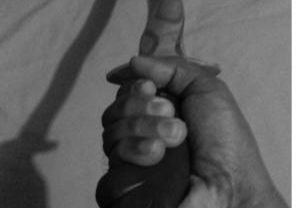In my opinion, the use of the blade is the highest expression of the Filipino martial arts (FMA). The one thing that separates blade fighting from stick fighting or empty hand fighting is that it requires a killing commitment. I would say it is not for everyone as its study demands higher responsibility.
Stripped of philosophy and spirituality, knife fighting is a killing art.
Growing up near a butchers’ bunker, I have seen and known the dark realities of the knife long before I took up the formal study of the FMA. The knife is the easiest to obtain of all deadly weapons, which is the reason why it is the implement used in most crimes.
It is only for this reason that I agree on teaching knife fighting. I believe the public has the right to understand the most popular weapon used by criminals.
In the mid-1970s, a lot of FMA masters were still secretive about the Philippine blade arts basically for fear of the skill being misused for evil purposes. In his book “The Filipino Martial Arts,” Dan Inosanto wrote, “Upon the request of the publisher and some of the elderly escrimadors, I have taken out 98 percent of the dagger techniques from this book.”
The knife is a close range weapon and its use in combat demands more psychological preparation than that of a gun. The movements of the blade may look beautiful in practice but they would spell bloody havoc when used for real.
There are primarily two ways to inflict damage with a knife – to stab with its point or to slash with its edge. Potential students of knife fighting may be caught up with the artistry of the movements forgetting what the knife really is – a tool of maximum destruction. Serious practitioners of the blade arts have a working knowledge of surface anatomy.
Roughly defined, “surface anatomy” is the knowledge of what vital organ lies underneath a certain body surface. Stab wounds are deadlier than slash wounds as a 1-inch puncture wound is sometimes enough to kill. But with a practitioner who knows surface anatomy, knife cuts could be deadly too.
On this, Jeff Imada’s “The Balisong Manual,” offers some useful information, “A cut to the brachial artery will result in loss of consciousness in 13 to 15 seconds and death in one and a half minute. A cut to the radial artery will result in loss of consciousness in 30 seconds and death in two minutes.”
The Philippines has an enduring blade culture and Filipino men in earlier times considered themselves hardly dressed without their knives tucked in their waists. With this fact stated, I would say some people’s observations were correct that Filipino knife fighting is taught in a “duelling” mode, meaning in an encounter, it was assumed that both parties were armed with knives.
From these observations sprouted arguments that since Filipino knife fighting is taught in “duelling” mode it is limited in application since not all people are willing to carry a knife plus the fact that most knife attacks are ambushes targeting unarmed individuals.
My take on the matter is that despite the fact that most styles of Filipino knife fighting were taught in a “duelling” mode, they offer one thing essential in defending against a knife regardless if you’re doing it armed or unarmed and that is it develops courage to be “at home” with the blade.
While technique is important, any seasoned fighter would attest that it is courage that would spell the difference between victory and defeat.
The late Grandmaster Ben Largusa, the protégé of kali death-match fighter Grandmaster Floro Villabrille, once said that technique is secondary to attitude when it comes to knife fighting for the simple reason that when blades were used in an encounter only one person would usually walk out of it alive. Largusa’s statement has a counterpart in the realm of western swordsmanship.
Aldo Nadi, one of the greatest fencing masters who had experienced fighting a real duel with real swords in his book “On Fencing,” wrote, “Apart from the hazard and luck in one single pass of the arms, the explanation lies in the fact that “on the ground” the element of courage may prove to be more important than the element of skill – and you just cannot know how courageous you are until the duel starts.”
As a practitioner of edged weapons myself, I opined that a thorough study of knife fighting is crucial if a martial artist hopes to defend himself realistically against the blade. Inosanto, in another book “Absorb What is Useful,” aptly said it with the following words, “If you are going to disarm a knife fighter you have to become a knife fighter yourself, otherwise you don’t stand a chance.
Even understanding the knife might not be enough. As Richard Pryor once said, “If someone comes at you with a knife run and if you can’t run fly.”





















